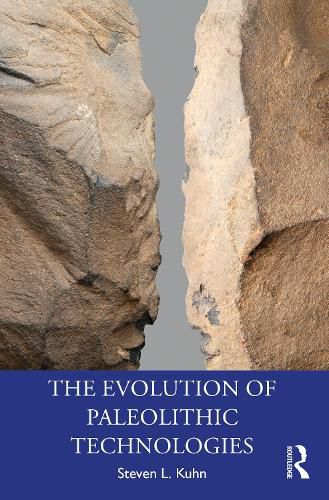Readings Newsletter
Become a Readings Member to make your shopping experience even easier.
Sign in or sign up for free!
You’re not far away from qualifying for FREE standard shipping within Australia
You’ve qualified for FREE standard shipping within Australia
The cart is loading…






The Evolution of Paleolithic Technologies provides a novel perspective on long-term trajectories of evolutionary change in Paleolithic tools and tool-makers.
Members of the human lineage have been producing stone tools for more than 3 million years. These artefacts provide key evidence for important evolutionary developments in hominin behaviour and cognition. Avoiding conventional approaches based on progressive stages of development, this book instead examines global trends in six separate dimensions of technological behaviour between 2.6 million and 10,000 years ago. Combining these independent trends results in both a broader and a more finely punctuated perspective on key intervals of change in hominin behaviour. To draw this picture together, the concluding section explores behavioural, cognitive, and demographic implications of developments in material culture and technological procedures at seven key intervals during the Pleistocene.
Researchers interested in Paleolithic archaeology will find this book invaluable. It will also be of interest to archaeologists researching stone tool technology and to students of human evolution and behavioural change in prehistory.
$9.00 standard shipping within Australia
FREE standard shipping within Australia for orders over $100.00
Express & International shipping calculated at checkout
The Evolution of Paleolithic Technologies provides a novel perspective on long-term trajectories of evolutionary change in Paleolithic tools and tool-makers.
Members of the human lineage have been producing stone tools for more than 3 million years. These artefacts provide key evidence for important evolutionary developments in hominin behaviour and cognition. Avoiding conventional approaches based on progressive stages of development, this book instead examines global trends in six separate dimensions of technological behaviour between 2.6 million and 10,000 years ago. Combining these independent trends results in both a broader and a more finely punctuated perspective on key intervals of change in hominin behaviour. To draw this picture together, the concluding section explores behavioural, cognitive, and demographic implications of developments in material culture and technological procedures at seven key intervals during the Pleistocene.
Researchers interested in Paleolithic archaeology will find this book invaluable. It will also be of interest to archaeologists researching stone tool technology and to students of human evolution and behavioural change in prehistory.